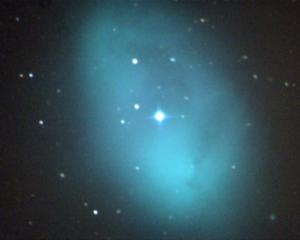
Last week I spent two long, cold nights trying to capture it with my telescope in a frost-whitened paddock in Middlemarch. Fourteen hours of exposure time, strung together in shivering fragments. It reminded me of 2003, back when I had what I thought was my dream job: head of outreach for NASA’s Hubble Space Telescope.

I left Hubble in the post-9/11 years, when America bristled with suspicion and swagger.
I wanted my children to grow up somewhere gentler. The funny thing is, those George W. Bush years now seem almost innocent compared to the current reign of King Donald. But I digress.
Back to the paddock. When you’re chasing a nebula all night, little things become enemies. Frost forms on the lens just as the sky is perfectly clear overhead.
As a result, my wife’s hair dryer has become an unlikely scientific instrument. Microsoft, in its wisdom, decided to put my computer to sleep in the middle of an exposure, as though the cosmos could wait until morning. Out in the stillness, the only sounds were the whirr of the mount, the odd bleat from a restless sheep, and my own muttered curses.
But eventually, the computer obeyed, the frost was beaten back, and the photons did their work. Fourteen hours later, there it was: a fragile, glowing portrait of the Tarantula. Light that left long before humans walked the Earth, caught by glass and silicon in a frosty paddock in Middlemarch.
Reflecting, I think less about the frustrations and more about the patience. Presidents come and go, their bluster fading almost before the ink dries on history.
The cosmos doesn’t notice. It continues to create beauty at a pace that outlasts us all.











